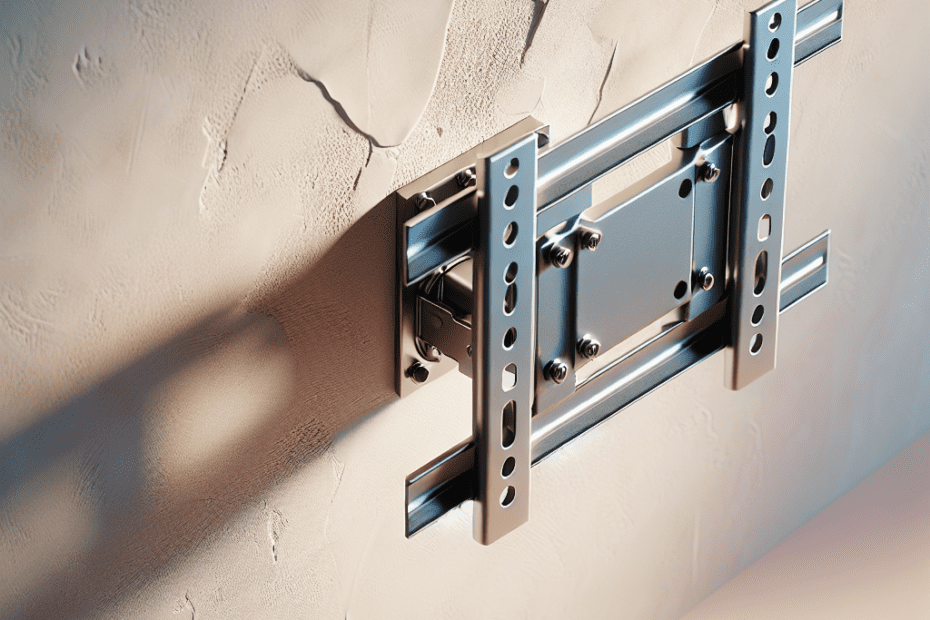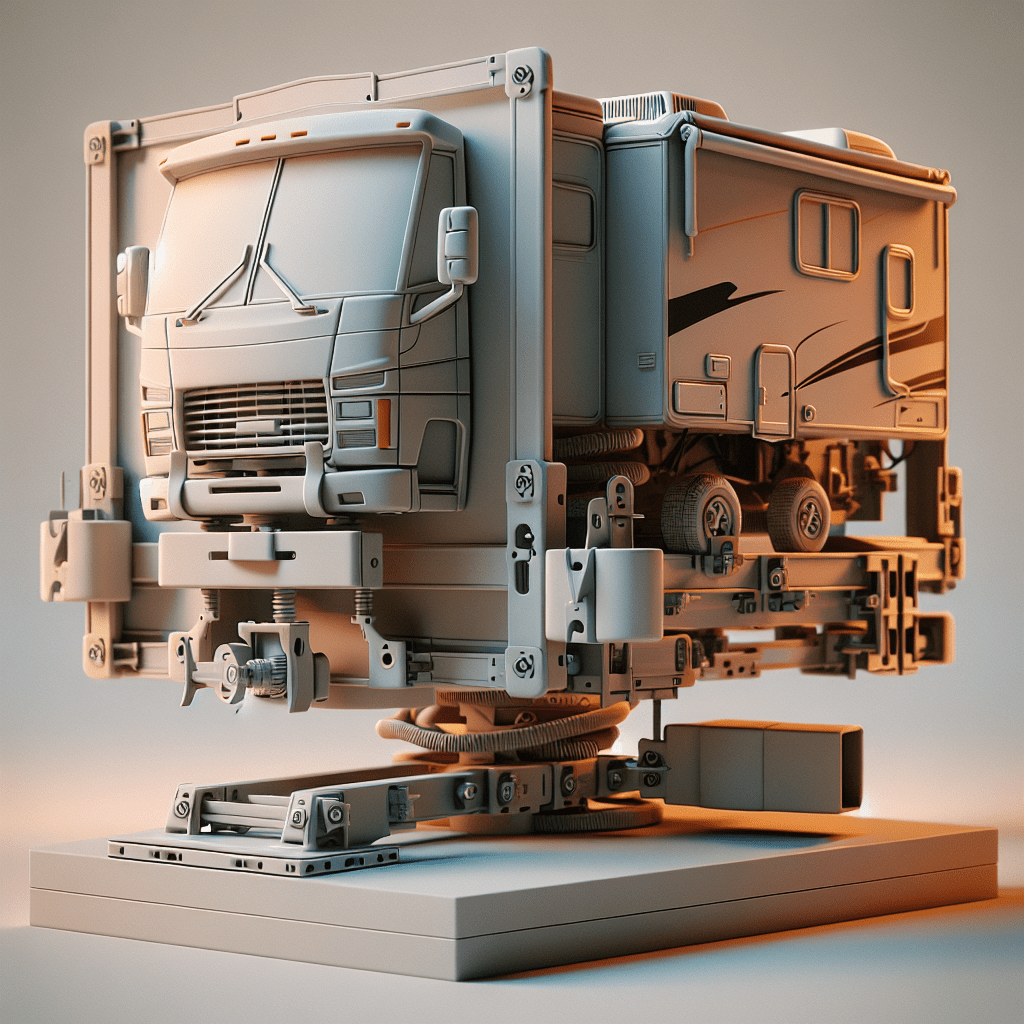Mounting a TV on a Plaster Wall
When it comes to mounting a TV on a plaster wall, it’s important to choose the right TV mount and ensure secure anchoring to prevent any mishaps. Let’s dive into the key considerations for a successful TV mounting experience.
Choosing the Right TV Mount
Selecting the right TV mount is crucial for achieving the desired functionality and stability. There are various types of TV mounts available, such as fixed mounts, tilt mounts, and full-motion mounts. Consider the following factors when choosing a TV mount for your plaster wall:
-
Weight Capacity and VESA Standards: Before purchasing a TV mount, check the weight capacity of the mount and ensure it can support the weight of your TV. Additionally, verify that the mount is compatible with your TV’s VESA standards, which determine the pattern of mounting holes on the back of the TV.
-
TV Size and Wall Studs: Take into account the size of your TV and the location of the wall studs. Larger TVs may require mounts with higher weight capacities, while the spacing of the wall studs may impact the positioning of the mount. It’s important to distribute the weight of the TV evenly and mount the TV bracket onto the studs for secure installation.
-
Proper Measurements and Placement: Measure the dimensions of your TV and consider the desired height and viewing angle. This will help you choose a mount that positions the TV at the optimal height and angle for comfortable viewing. Also, ensure that the mount aligns with the placement of any existing furniture or equipment.
Anchoring Options for Plaster Walls
Plaster walls require proper anchoring to support the weight of a mounted TV. While plastic anchors are not recommended for mounting a TV on a plaster wall due to their limited strength (ASHanging), toggle bolts and molly bolts are excellent options.
-
Toggle Bolts for Secure Mounting: Toggle bolts are sturdy anchors that provide reliable support for mounting a TV on a plaster wall. They are designed to hold heavier weights and are suitable for areas with high vibration or movement. Toggle bolts consist of a bolt with spring-loaded wings that expand behind the wall after insertion. This provides a secure anchor point for the TV mount.
-
Molly Bolts for Added Support: Molly bolts are another viable option for mounting a TV on a plaster wall. These anchors feature a screw, a metal sleeve, and a toggle. When the screw is tightened, the toggle pulls against the back of the plaster, providing additional support. Molly bolts are particularly useful when the wall studs are not conveniently located.
It’s important to follow the manufacturer’s instructions and use the appropriate tools and hardware when installing a TV mount on a plaster wall to ensure proper installation and prevent any damage to the wall (Mount-It!). If you’re uncertain about the installation process or lack the necessary tools, it’s recommended to consult a professional or handyman for assistance (Consumer Reports).
By choosing the right TV mount and utilizing the appropriate anchoring options for plaster walls, you can confidently mount your TV and enjoy your favorite shows and movies with peace of mind. Remember to always prioritize safety, proper measurements, and secure installation for a successful TV mounting experience.
Recommended Anchors for Plaster Walls
When it comes to mounting a TV on a plaster wall, selecting the right anchors is crucial for a secure and sturdy installation. Plaster walls can be more delicate compared to other wall types, so it’s essential to choose anchors that can provide the necessary support. Two recommended options for mounting a TV on a plaster wall are toggle bolts and molly bolts.
Toggle Bolts for Secure Mounting
Toggle bolts are highly regarded as one of the best anchors for mounting a TV on a plaster wall. They are specifically designed to hold heavy weights and provide strong support. Toggle bolts consist of a threaded rod with wings that expand behind the wall when inserted through a pre-drilled hole. This expansion creates a secure anchor point, distributing the weight of the TV evenly across a larger surface area. Toggle bolts are ideal for mounting TVs in areas with high vibration or movement.
Molly Bolts for Added Support
Molly bolts, also known as expansion anchors, are another suitable option for mounting a TV on a plaster wall. These anchors consist of a screw, metal sleeve, and a pair of wings. When the screw is tightened, the wings expand behind the wall, gripping the plaster and creating a stable anchor point. Molly bolts provide added support and can hold substantial weights.
It’s important to note that plastic anchors are not recommended for mounting a TV on a plaster wall. They are not strong enough to support the weight of the TV and can easily pull out of the wall, compromising the stability of the installation.
When using toggle bolts or molly bolts, it’s crucial to follow the manufacturer’s instructions for proper installation. This typically involves drilling a hole slightly larger than the diameter of the anchor, inserting the anchor into the hole, and tightening the screw until the wings or sleeve expand behind the wall. Always use anchors and screws specifically designed for plaster walls to prevent damage and ensure proper support for the TV.
For more information on TV mounting options and considerations, check out our article on tv mounts.
Proper Installation on Plaster Walls
When it comes to mounting a TV on a plaster wall, proper installation is key to ensure a secure and stable setup. This section will guide you through the essential steps of locating the studs and mounting the TV bracket.
Locating the Studs
Locating the studs behind the plaster wall is crucial for a secure TV mount installation. The studs provide the necessary support to hold the weight of the TV and prevent the mount from pulling out of the wall. To find the studs, you can use a stud finder, a handheld device that detects changes in density behind the wall.
Start by positioning the stud finder against the wall and slowly moving it horizontally until it detects a stud. Once the stud is located, mark its edges with a pencil. Repeat this process to locate additional studs in the desired mounting area. It is recommended to mount the TV directly onto the studs for added stability and support.
Mounting the TV Bracket
After locating the studs, it’s time to mount the TV bracket onto the plaster wall. Before drilling any holes, double-check that the bracket is level and aligned with your desired viewing height. Use a measuring tape to ensure accurate placement.
Mark the locations of the mounting holes on the wall, making sure they align with the studs. Pre-drill small pilot holes at the marked spots to guide the screws during installation. Then, attach the TV bracket to the wall by securing the screws into the pre-drilled holes. Ensure that the screws are tightened securely but be careful not to overtighten and damage the plaster.
Once the TV bracket is securely attached to the wall, you can proceed with mounting the TV onto the bracket according to the manufacturer’s instructions. Make sure to follow the weight capacity and guidelines specified for the TV mount. It is also advisable to have someone assist you during this step to ensure the TV is safely attached to the bracket.
By properly locating the studs and securely mounting the TV bracket, you can enjoy your TV viewing experience without any worries. Remember, if you’re unsure about the installation process or prefer professional assistance, it’s always a good idea to consult a qualified installer. With the right techniques and tools, you can achieve a secure and visually appealing TV mount on your plaster wall.
Types of TV Mounts for Plaster Walls
When it comes to mounting a TV on a plaster wall, there are several types of TV mounts to consider. Each type offers different features and benefits, allowing you to find the perfect fit for your needs and preferences. The most common types of TV mounts for plaster walls are fixed mounts, tilt mounts, and full-motion mounts.
Fixed Mounts for Simple Installation
Fixed mounts, also known as low-profile mounts, are a popular choice for mounting TVs on plaster walls. These mounts provide a sleek and flush installation, keeping the TV close to the wall for a clean and seamless look. Fixed mounts are generally the easiest to install and offer a stable and secure mounting solution.
With a fixed mount, the TV cannot be adjusted once it is mounted. This type of mount is ideal for situations where you don’t require any flexibility in terms of adjusting the viewing angle. If you have a designated seating area and want a simple and straightforward installation, a fixed mount may be the right choice for you.
Tilt Mounts for Adjustable Viewing Angles
Tilt mounts are another option to consider for mounting a TV on a plaster wall. These mounts allow you to adjust the vertical viewing angle of the TV. This is particularly useful when you need to mount the TV higher on the wall, such as above a fireplace.
By tilting the TV downward, you can achieve a better viewing angle and reduce glare. Tilt mounts are recommended for TVs larger than 42 inches, as they provide more flexibility in adjusting the viewing position. With a tilt mount, you can enjoy a comfortable viewing experience from various seating areas in the room.
Full-Motion Mounts for Versatile Placement
For the ultimate flexibility and versatility, full-motion mounts are an excellent choice. These mounts, also known as articulating mounts, offer a wide range of motion and adjustment options. With a full-motion mount, you can extend the TV away from the wall, tilt it up and down, and even swivel it from side to side.
Full-motion mounts are perfect for rooms with multiple seating areas or when you need to mount the TV in a corner. They allow you to achieve the optimal viewing angle from any position in the room. However, it’s important to note that full-motion mounts typically require more space and may be more complex to install compared to fixed or tilt mounts.
When selecting a TV mount for your plaster wall, consider factors such as the weight capacity and VESA standards of the mount, the size of your TV, and the location of the wall studs. Proper measurements and placement are crucial to ensure a secure and stable installation. For more information on these considerations, refer to our section on Considerations for TV Mounting.
By understanding the different types of TV mounts available for plaster walls, you can make an informed decision based on your specific requirements. Whether you prefer a fixed mount for a sleek and stable installation, a tilt mount for adjustable viewing angles, or a full-motion mount for versatile placement, there is a TV mount out there to suit your needs.
Considerations for TV Mounting
When it comes to mounting a TV on a plaster wall, there are several important considerations to keep in mind. These considerations include weight capacity and VESA standards, TV size and wall studs, as well as proper measurements and placement.
Weight Capacity and VESA Standards
Before selecting a TV mount for your plaster wall, it is essential to consider the weight capacity of the mount. The weight capacity should exceed the weight of the TV being mounted to ensure it can support the weight without any issues. It is recommended to consult the manufacturer’s specifications or documentation to determine the weight of your TV.
In addition to weight capacity, it is crucial to ensure that the TV mount is compatible with the VESA (Video Electronics Standards Association) standards of your TV. TVs have a generic mounting pattern built into the back of the unit, known as the VESA Interface Standard. This pattern allows for the attachment of TV mounting brackets. The VESA size is determined by measuring the distance (in millimeters) between the four holes on the back of the TV. Common VESA sizes include 200 x 200 for up to 32-inch TVs, 400 x 400 for up to 60-inch TVs, and 600 x 400 for large screens ranging from 70 to 84 inches. Ensuring compatibility between the TV mount and your TV’s VESA standards is vital for a secure and proper installation.
TV Size and Wall Studs
When mounting a TV on a plaster wall, locating the wall studs behind the plaster is highly recommended. Mounting the TV directly to the studs provides added stability and support, especially for larger and heavier TVs. It is advised to use a stud finder to locate the studs, and then mark their positions before proceeding with the installation.
If studs cannot be located or are not in the desired position for mounting the TV, alternative methods can be employed to securely mount the TV on the plaster wall. This may include using toggle bolts or hollow wall anchors. These anchors provide a reliable means of anchoring the TV mount to the wall, ensuring it stays securely in place. However, it is important to use anchors and screws specifically designed for plaster walls to prevent damage to the wall and ensure proper support for the TV.
Proper Measurements and Placement
Taking proper measurements and carefully planning the placement of the TV mount on the wall is crucial to ensure the TV is at the desired height and viewing angle. Before installation, consider factors such as the distance from the TV to where you’ll be seated, as well as the height at which you want the TV to be positioned. A rule of thumb to follow is that you should aim for a television-to-distance ratio of 2:1 for standard HDTVs and a 1.5:1 or 1:1 ratio for 4K Ultra HDTVs. This will help ensure optimal picture and sound quality.
In terms of height, the TV should be positioned at eye level when seated in the primary viewing area. However, this may vary depending on personal preference and the layout of the room. It is recommended to use a tape measure and level to accurately measure and mark the desired position on the wall before mounting the TV bracket.
By considering these factors, you can ensure a successful and secure TV mounting experience on your plaster wall. Remember to follow the manufacturer’s instructions and use the appropriate tools and hardware for your specific TV mount and plaster wall type. For more information on TV mounts and installation, you can visit our article on tv mount.
- Unleash the Potential: Exploring the World of Ceiling TV Mounts - February 15, 2024
- How to Mount a Tv on a Swivel Stand - February 15, 2024
- How to Hang Tv Outside - February 14, 2024


